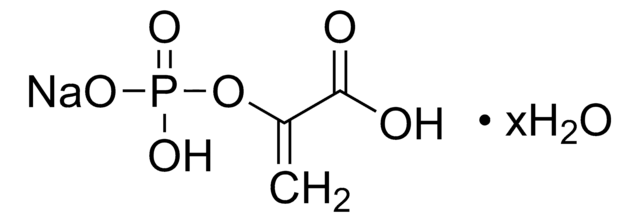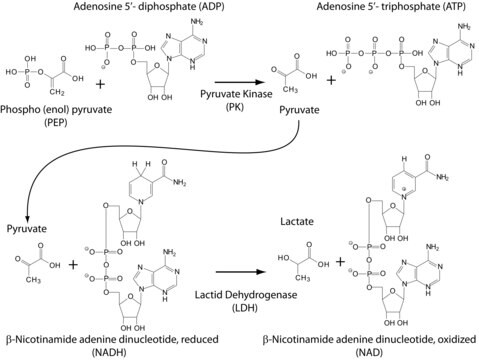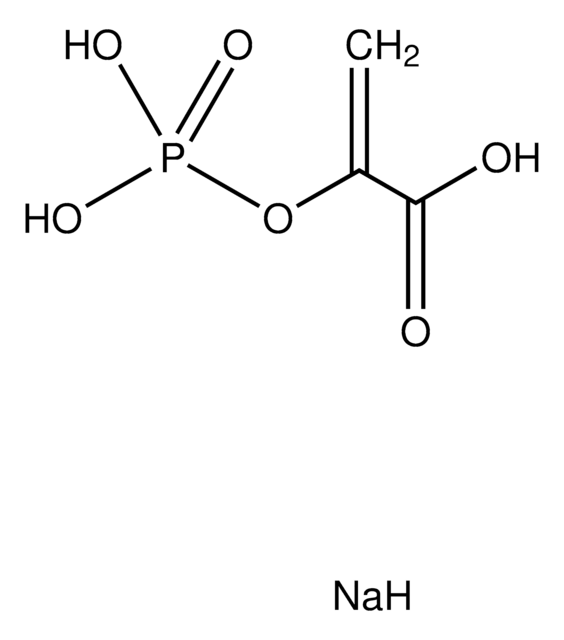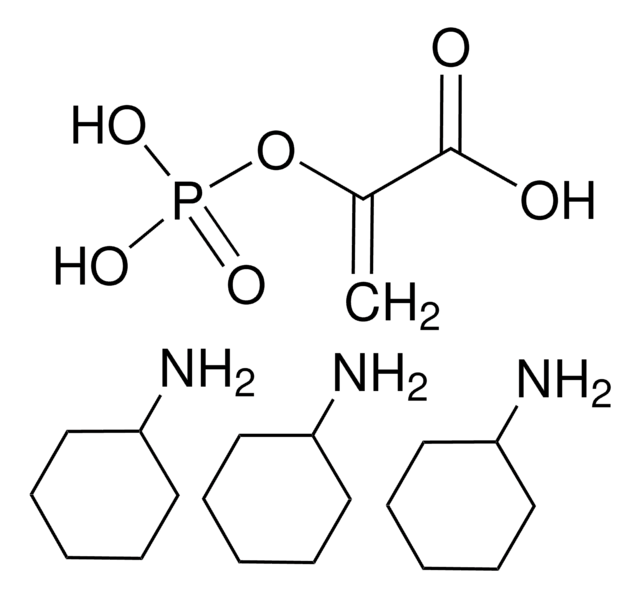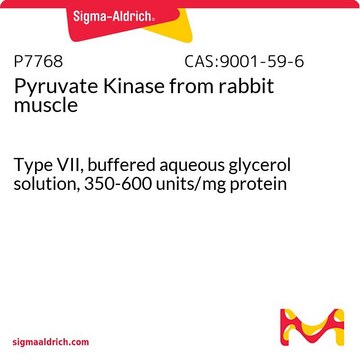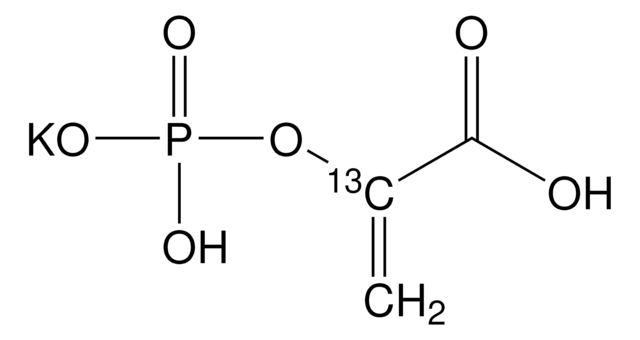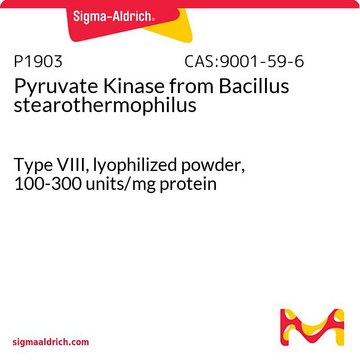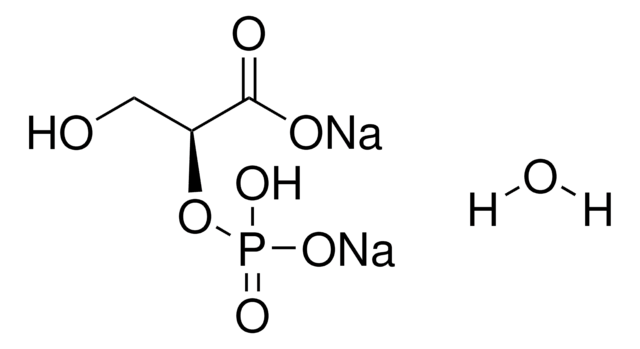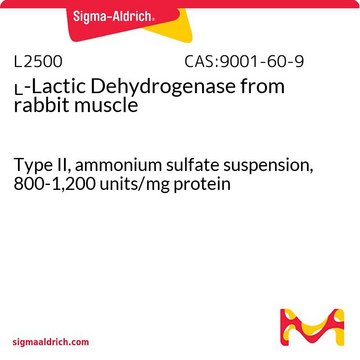P7127
Phospho(enol)pyruvic acid monopotassium salt
≥97% (enzymatic), powder
Synonym(s):
2-(Phosphonooxy)-2-propenoic acid monopotassium salt, mono-Potassium phosphoenolpyruvate, PEP-K
About This Item
Recommended Products
product name
Phospho(enol)pyruvic acid monopotassium salt, ≥97% (enzymatic)
Quality Level
Assay
≥97% (enzymatic)
form
powder
solubility
water: 100 mg/mL, clear, colorless
storage temp.
−20°C
SMILES string
[K+].OC(=O)C(=C)OP(O)([O-])=O
InChI
1S/C3H5O6P.K/c1-2(3(4)5)9-10(6,7)8;/h1H2,(H,4,5)(H2,6,7,8);/q;+1/p-1
InChI key
SOSDSEAIODNVPX-UHFFFAOYSA-M
Looking for similar products? Visit Product Comparison Guide
General description
Application
- to maintain a constant concentration of adenosine triphosphate (ATP) for active gel assembly
- as a component in assay buffer for in vitro ATPase assay
- as a stock solution for optical trapping assay
Biochem/physiol Actions
Storage Class Code
13 - Non Combustible Solids
WGK
WGK 3
Flash Point(F)
Not applicable
Flash Point(C)
Not applicable
Personal Protective Equipment
Certificates of Analysis (COA)
Search for Certificates of Analysis (COA) by entering the products Lot/Batch Number. Lot and Batch Numbers can be found on a product’s label following the words ‘Lot’ or ‘Batch’.
Already Own This Product?
Find documentation for the products that you have recently purchased in the Document Library.
Customers Also Viewed
Articles
Review the 10 steps of glycolysis in the Embden-Meyerhof-Parnas glycolytic pathway. Easily compare reaction stages and buy the enzymes for your life science research.
We presents an article about the Warburg effect, and how it is the enhanced conversion of glucose to lactate observed in tumor cells, even in the presence of normal levels of oxygen. Otto Heinrich Warburg demonstrated in 1924 that cancer cells show an increased dependence on glycolysis to meet their energy needs, regardless of whether they were well-oxygenated or not.
Our team of scientists has experience in all areas of research including Life Science, Material Science, Chemical Synthesis, Chromatography, Analytical and many others.
Contact Technical Service

